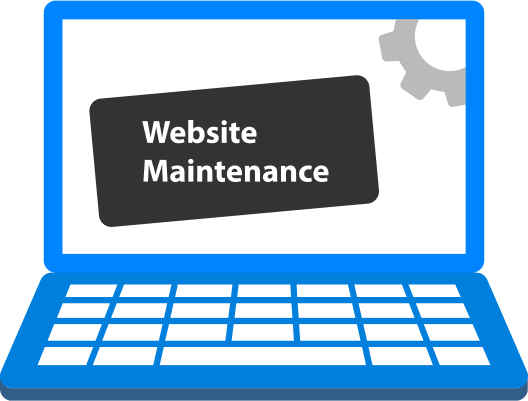Sure! Here’s a comprehensive overview of SEO (Search Engine Optimization), including its importance, key components, strategies, and best practices.
Comprehensive Guide to SEO
Table of Contents
- Introduction to SEO
- Definition and Importance
- Benefits of SEO
- How Search Engines Work
- Key Components of SEO
- On-Page SEO
- Off-Page SEO
- Technical SEO
- SEO Strategies
- Keyword Research
- Content Optimization
- Link Building
- Local SEO
- Mobile SEO
- SEO Best Practices
- Create Quality Content
- Optimize Meta Tags
- Improve Site Speed
- Use Header Tags
- Optimize for Voice Search
- Measuring SEO Success
- Key Performance Indicators (KPIs)
- Tools for Tracking SEO
- Common SEO Challenges
- Algorithm Updates
- Competition
- Time Commitment
- Conclusion
- The Ongoing Nature of SEO
- Final Thoughts
1. Introduction to SEO
Definition and Importance
SEO, or Search Engine Optimization, is the practice of enhancing your website to improve its visibility in search engine results pages (SERPs). The higher your site ranks, the more likely users are to visit.
Benefits of SEO
- Increased Traffic: Higher rankings lead to more organic traffic.
- Cost-Effectiveness: SEO is generally more cost-effective than paid advertising.
- Enhanced User Experience: Good SEO practices improve site usability.
- Brand Credibility: High-ranking sites are often viewed as more trustworthy.
2. How Search Engines Work
Crawling
Search engines use bots (or spiders) to crawl web pages, following links and gathering information about the content.
Indexing
After crawling, search engines index the collected information, storing it in vast databases. This allows them to retrieve relevant results when users conduct searches.
Ranking
When a user searches for a query, search engines rank the indexed pages based on various factors, including relevance and authority, to display the most pertinent results.
3. Key Components of SEO
On-Page SEO
On-page SEO refers to optimizing individual web pages. Key elements include:
- Content Quality: High-quality, relevant content that meets user intent.
- Meta Tags: Optimizing title tags and meta descriptions for relevant keywords.
- URL Structure: Creating SEO-friendly URLs.
Off-Page SEO
Off-page SEO involves external factors that influence your site’s ranking, such as:
- Backlinks: Links from other websites that signal authority and trust.
- Social Signals: Engagement on social media platforms can enhance visibility.
Technical SEO
Technical SEO ensures that search engines can crawl and index your site efficiently. Key aspects include:
- Site Speed: Faster loading times improve user experience.
- Mobile-Friendliness: Responsive design is essential for mobile users.
- XML Sitemap: Helps search engines understand the structure of your site.
4. SEO Strategies
Keyword Research
Identify relevant keywords that potential customers are searching for using tools like Google Keyword Planner, SEMrush, or Ahrefs.
Content Optimization
Create valuable content optimized for your target keywords. Incorporate keywords naturally, and use variations to enhance relevance.
Link Building
Develop a strategy for acquiring backlinks from reputable sites, such as guest blogging, partnerships, or creating shareable content.
Local SEO
Optimize your site for local searches by claiming your Google My Business listing, gathering reviews, and using local keywords.
Mobile SEO
Ensure your site is mobile-friendly, with responsive design, fast loading times, and optimized content for smaller screens.
5. SEO Best Practices
Create Quality Content
Focus on providing valuable information that addresses the needs of your audience. High-quality content is more likely to be shared and linked to.
Optimize Meta Tags
Craft compelling title tags and meta descriptions that include target keywords and encourage clicks.
Improve Site Speed
Use tools like Google PageSpeed Insights to analyze and improve loading times.
Use Header Tags
Organize content with header tags (H1, H2, H3) to improve readability and help search engines understand your content structure.
Optimize for Voice Search
Consider how people phrase voice queries and optimize your content for long-tail keywords and natural language.
6. Measuring SEO Success
Key Performance Indicators (KPIs)
- Organic Traffic: Track the number of visitors coming from search engines.
- Keyword Rankings: Monitor your rankings for target keywords.
- Bounce Rate: Analyze how quickly visitors leave your site.
- Conversion Rate: Measure how well your site converts visitors into customers.
Tools for Tracking SEO
- Google Analytics: Monitor traffic and user behavior.
- Google Search Console: Analyze site performance and fix issues.
- SEO Tools: Use tools like SEMrush, Moz, or Ahrefs for in-depth analysis.
7. Common SEO Challenges
Algorithm Updates
Search engines frequently update their algorithms, which can impact rankings. Stay informed about changes and adjust your strategies accordingly.
Competition
Many industries are highly competitive. Regularly analyze competitors and look for opportunities to differentiate your content and services.
Time Commitment
SEO is an ongoing process that requires consistent effort. Allocate time for research, content creation, and monitoring results.
8. Conclusion
The Ongoing Nature of SEO
SEO is not a one-time task but an ongoing effort that requires regular updates and adjustments based on changing trends and algorithms.
Final Thoughts
Investing in SEO can significantly enhance your online visibility, drive organic traffic, and improve your business’s bottom line. By understanding its components and implementing best practices, you can achieve lasting results.
This structured overview can be expanded into a more detailed document by elaborating on each section, providing examples, case studies, and practical tips. If you need specific sections developed further or have particular areas of interest, let me know!
4o mini


